The extent to which children think about animals crossing the road stopped when they answered the question about the chicken. And even then that query, and its many derisions, are tiresome, repetitive, and work for the five-year-old audience one time only. Wildlife Crossings: Protecting Animal Pathways Around the World is an illustrated book that will fascinate elementary ages and get them to think, yes actually think about something that they’ve never thought about before.
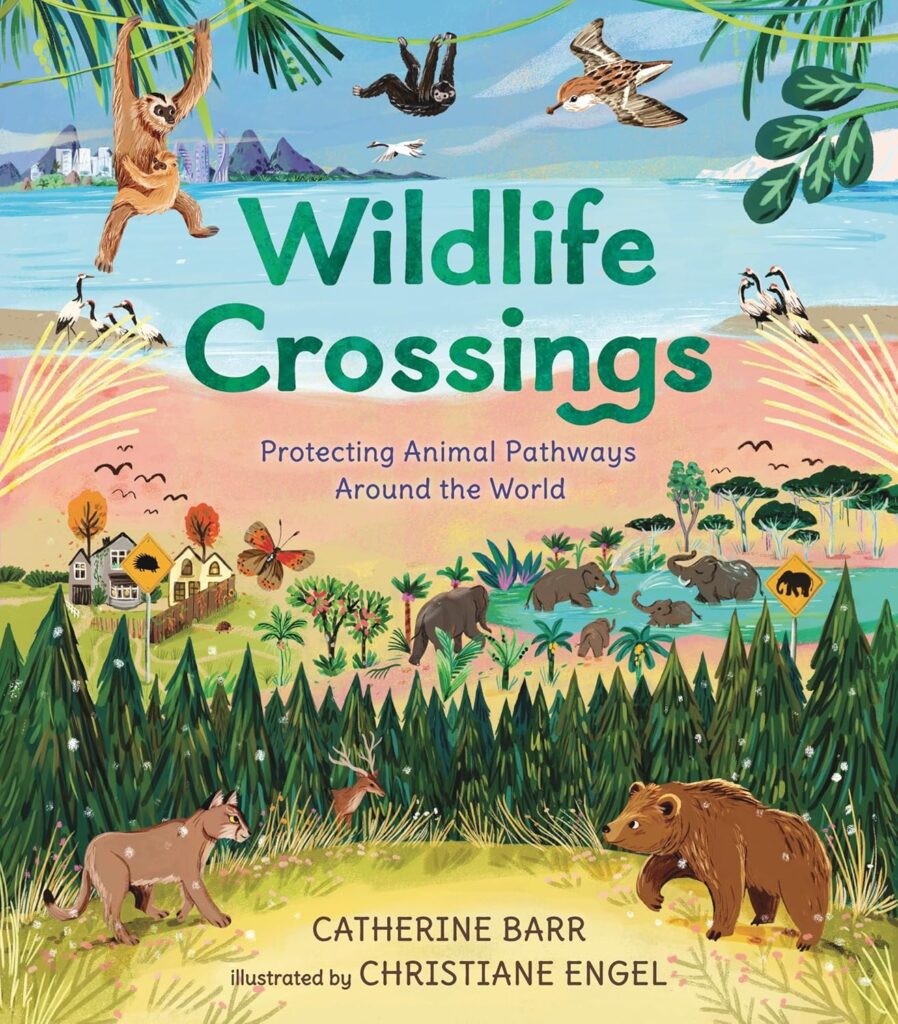
It’s not as basic as how, or why did the chicken cross the road. However, I’m a glass-full kind of person, so at its very best, Wildlife Crossings will get kids using their critical thinking skills that rarely get a workout. Wildlife Crossings present a problem that kids have most likely never thought about, how modern life alters the way animals want to migrate, and what humans did to make things as natural as possible for the critters.
When I heard Wildlife Crossings my adult brain immediately went to the infamous Turtle Tunnels in Florida. This book is not as divisive as that project. This is a slightly larger than surface image look at seven regions, the animals in trouble and how the issue was corrected. Each area profiled starts with a two-page spread that shows the animals encountering the problems. It could be crops planted where elephants are used to migrating, fish that are unable to migrate because of dams that were built or gibbons that don’t have vines to vines to swing across vast land areas.
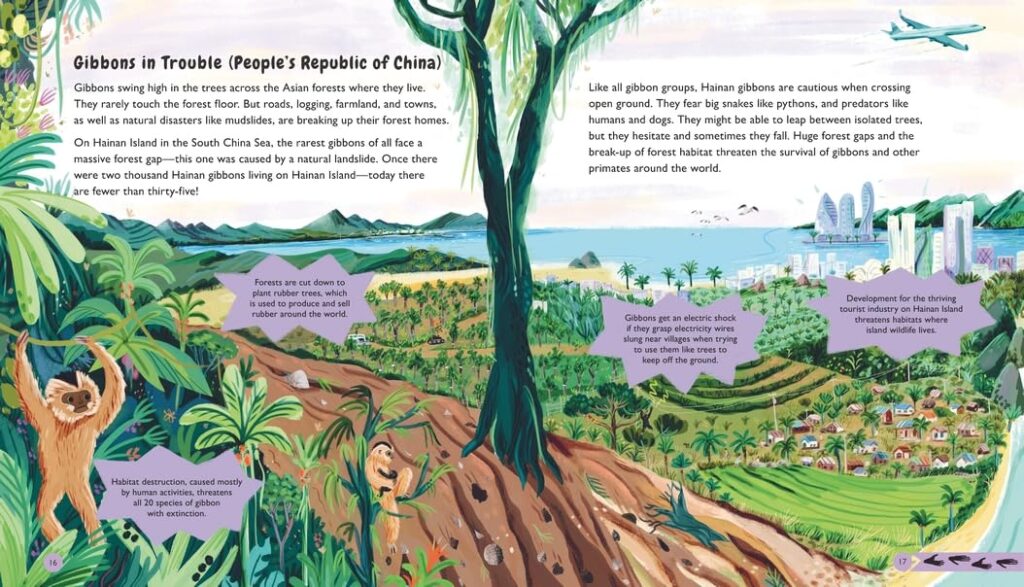
That two-page spread has two or three simple paragraphs that explain what’s going on, as well as, a couple of factoid blurbs that are spread across the pages. The illustrations are lush, show the immense areas that lie ahead of the animals, and give a hint about the natural beauty that everyone in that region calls home. The solution pages that follow every animal introduction has an illustration of what was built to solve the problem and the same factoid blurbs that this time have answers to common questions about the regions affected animals and why they’re important.
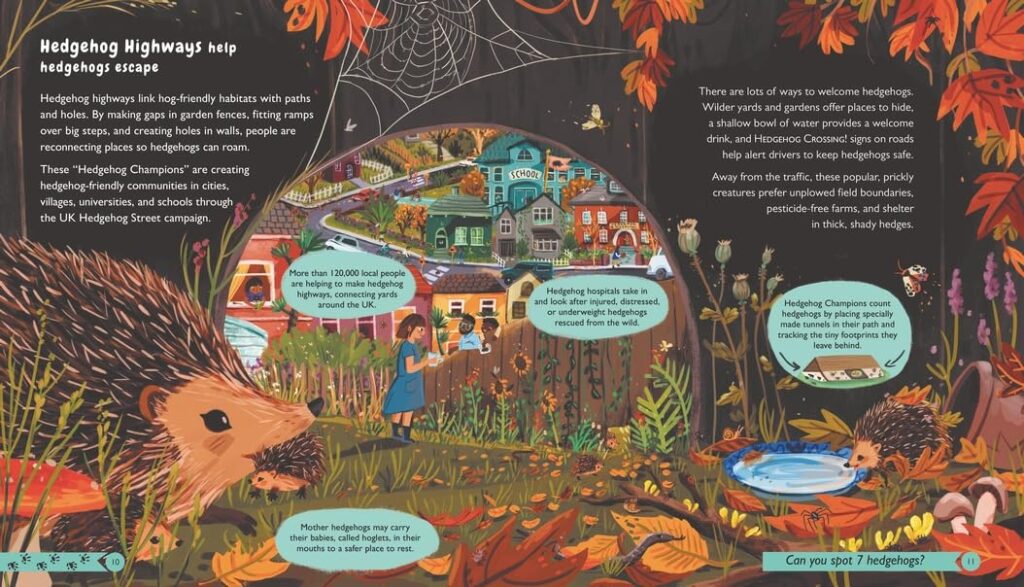
The text blocks are naturally incorporated into zones within the landscapes that accommodate them, like clouds, mountains, water or grassland. Wildlife Crossings has the exotic animals that elementary ages would expect, like elephants, but also the curious and unknown, like a hedgehog, an a variety of methods that humans have developed to get them where they need to go. If the entire book consisted of building a land bridge over/under the street/lake/city, it would be a rather uninteresting book.
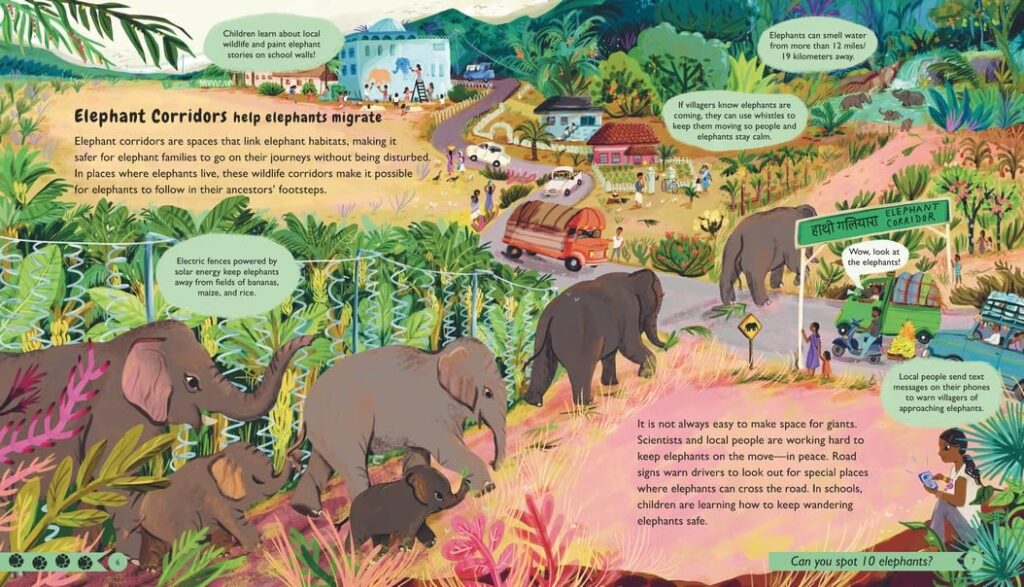
The rope ladder for the gibbons and the fish ladder for the salmon in the Moselle River in Koblenz, Germany help shake things up. The gibbons is really cute, almost human-looking primates with a tan fur and darker colors on their heads that make them like Billy Idol. If anything, Wildlife Crossings will introduce those young ages to gibbons and make them want to visit Hainan Island to see these critters in action. The fish ladder in Koblenze starts at the bottom, gets marginally thicker at the top, has a visitor’s area in the middle where people can see the fish before they go out into the river and an observatory on the top level. Granted, this cost much more than the loathed turtle tunnels, but it’s actionable and is providing a service to many more animals. The book ends with a quick look at seven more species that have had special accommodations built for them so that everyone can live in roughly the same area.
Elementary-aged children have probably never thought about our human habitats getting in the way of other species. Some jerk-head students might’s said some glib, ignorant things in class regarding them, but few students have thought about tangible ways to solve the problem. Wildlife Crossings shows them the solution, and that’s something that few illustrated books do in a non-guilt way. The pollution books might show the dirty beaches with the plastic bottles and ask a question as to what you can do about it, but it’s not realistic or actionable.
There’s a bigger sense of success and can-do positivity about Wildlife Crossings that comes across to young readers. It’ll be surprising if more than one student in any of your classes has physically been to the areas listed in the book, but that doesn’t matter. They’ll research a fish bridge, and see that they can make one for their own fish at home if they do a simple online search. This is a book that, perhaps unintentionally, gets kids thinking on a very local level but were motivated by a situation that originated far away from where they live. Wildlife Crossings, to that end passes Ric Flair Illustrated Book Test in that it walks the walk and talks the talk, but does so in an entertaining way that kids won’t even realize that they’re learning something.
Wildlife Crossings: Protecting Animal Pathways Around the World is by Catherine Barr with illustrations by Christiane Engel and is available on Candlewick Press.
There are affiliate links in this post.

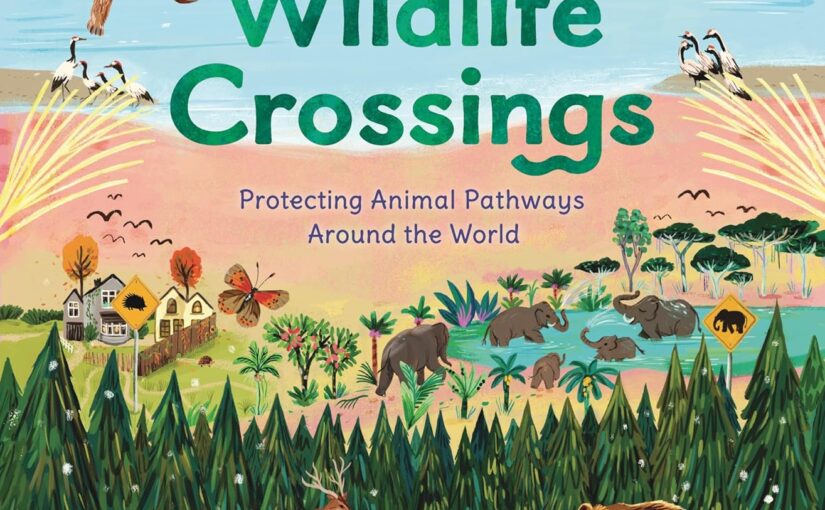



 Facebook
Facebook Twitter
Twitter Flickr
Flickr GooglePlus
GooglePlus Youtube
Youtube